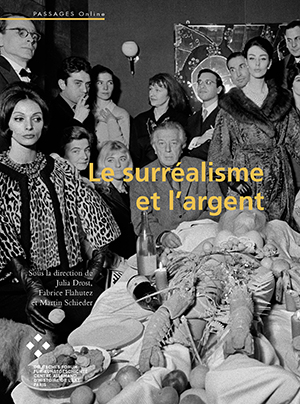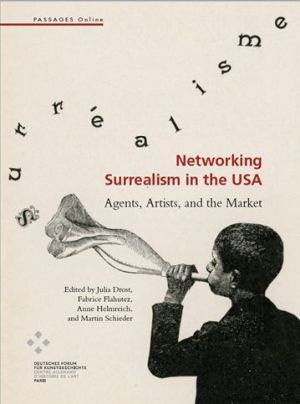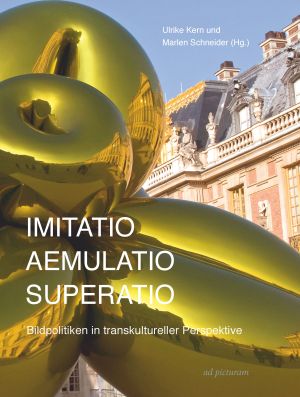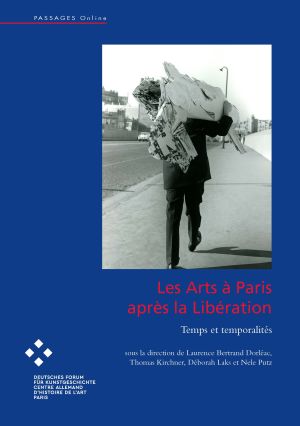Schieder, Martin
Entre croyance aux miracle et iconoclasme: L’espace sacré en France au XVIIIe siècle
This conference volume examines the evidence, religious experiences and aesthetic transformations of sacred space in the Age of Enlightenment from an inter- and transdisciplinary perspective. To what extent should we understand the church in the 18th century not only as a sacred space, but also as a place that attracts believers and tourists, clergy and artists, nobles and citizens, men and women alike, and at the same time has a social, aesthetic and emotional dimension? How can we explain the fundamental secularisation and the dissolution of boundaries that affected the sacred space between the death of Louis XIV and the French Revolution? How is the question of the credibility of transcendence dealt with in the age of the emerging natural sciences, encyclopaedias and the progress of knowledge in art? Against the background of the confrontation between criticism of the church and absolutism, atheism, demystification of the religious and plausible reactualisation of the spiritual, (syn)aesthetic concepts of sacred spaces are of particular relevance. Not only integrated into art-theoretical discourses, they are a tangible expression of the continuous readjustment of Enlightenment society.
Le surréalisme et l’argent
Animé par l’augmentation des flux migratoires au cours du 20e siècle, le surréalisme s’est développé en un mouvement artistique unique – et à bien des égards « pionnier » – dont l'influence fut mondiale. Cette anthologie analyse pour la première fois les rôles qu’ont joués les artistes, les marchands d’art, les collectionneurs et les musées au sein des réseaux fondateurs du surréalisme en Europe, hissant ce dernier au rang des courants avant-gardistes du 20e siècle. Cet ouvrage présente 20 essais sur les différents acteurs du marché de l’art, du surréalisme et sur leurs interactions dans l’Europe de 1924 à 1969.
Networking Surrealism in the USA: Agents, Artists, and the Market
This volume brings the complex networks that fostered and sustained surrealism in North America into academic focus. Who — among collectors, critics, dealers, galleries, and other kinds of mediating agents — supported the artists in the surrealist orbit, in what ways, and why? What more can be learned about highprofile collectors such as the de Menils in Houston or Peggy Guggenheim in New York? Compared to their peers in Europe, did artists in the United States use similarly spectacular strategies of publicity and mediation? In what networks did the commercial galleries operate, locally and internationally, and how did they dialogue with museums? This book offers an innovative and lasting contribution to research and scholarship on the history of art in America, while focusing specifically on the expansion and reception of surrealism in the United States.
Imitatio – Aemulatio – Superatio: Bildpolitiken in transkultureller Perspektive. Thomas Kirchner zum 65. Geburtstag
Aemulative Handlungen wirken sich oft progressiv aus, sei es durch innovative Adaption, Modulation oder Perfektion von bereits Vorhandenem, aber auch durch ironische Brechung mit traditionellen Sehgewohnheiten. Diese Prozesse, durch die kulturelle, soziale und mediale Gegebenheiten sowohl in der Produktion als auch in der Rezeption von Kunst neu verhandelt werden, bilden den thematischen Schwerpunkt des Bandes. Vorgestellt wird eine epochen- und kulturraumübergreifende Perspektive auf den fortwährenden Bedeutungswandel visueller Zeichen und künstlerischer Verfahren. Die in den Fallstudien untersuchte Konfrontation verschiedener historischer, kultureller und ästhetischer Kontexte vermag es, den Kunstdiskurs zu dynamisieren, neue Sichtweisen zu eröffnen, und die anhaltende gesellschaftliche Brisanz von aktueller Kunst und Werken vergangener Epochen deutlich zu machen.
Die Thomas Kirchner gewidmete Festschrift wird von Ulrike Kern (Wissenschaftliche Assistentin am Kunstgeschichtlichen Institut der Goethe-Universität Frankfurt am Main) und Marlen Schneider (Maître de Conférences an der Université Grenoble Alpes/LARHRA) herausgegeben.
Les Arts à Paris après la Libération: Temps et Temporalités
The volume sheds new light on the Parisian art world after the Second World War, its protagonists, inter(national) dimensions and aesthetic challenges. It assembles a selection of contributions of the annual congress 2014/15 held at the German Center for Art History Paris as well as further results of research undertaken during that same year. Besides questions of historiography the publication focuses on case studies in which renowned artists like Giacometti, Picasso and Brassaï are analized. Furthermore, new protagonists, institutions and media are introduced and innovative perspectives developed. The volume thus makes a valuable contribution to the reevaluation of art of the postwar period.
Renationalisierung oder Sharing Heritage? Wo steht die Denkmalpflege im Euopäischen Kulturerbejahr 2018?
„Überall in Europa erleben wir gegenwärtig deutliche Renationalisierungsbewegungen und eine Inanspruchnahme des kulturellen Erbes für Identitätsbildungsprozesse von Ländern und Regionen. Im Zuge dessen werden die Grenzen zu Anderen deutlicher als zuvor markiert und Fragen der Zugehörigkeit zum Erbe kritisch ventiliert (z.B. gehört der Islam zu Deutschland/Europa? müssen wir Grenzkontrollen reaktivieren? etc.). Diesem Trend suchen europäische Institutionen durch die Betonung gemeinsamer Werte und Traditionen entgegenzusteuern – nach der Deklaration von Faro 2005 gilt das nicht zuletzt für die Ausrufung des europäischen Kulturerbejahres, das 2018 unter dem Motto Sharing Heritage steht und zu einer Neu-Betrachtung des kulturellen Erbes unter Prämissen des Kulturtransfers und der Rezeption von Ideen auffordert. Grenzräume erfahren dabei als Austauschregionen, aber auch als potentielle Konfliktregionen eine besondere Beachtung. Denkmalpflege, Archäologie und Museologie sind durch die aktuellen Neubewertungen des kulturellen Erbes wie alle anderen sammelnden Fächer zu einer Positionsbestimmung herausgefordert.“
Ingrid Scheurmann












